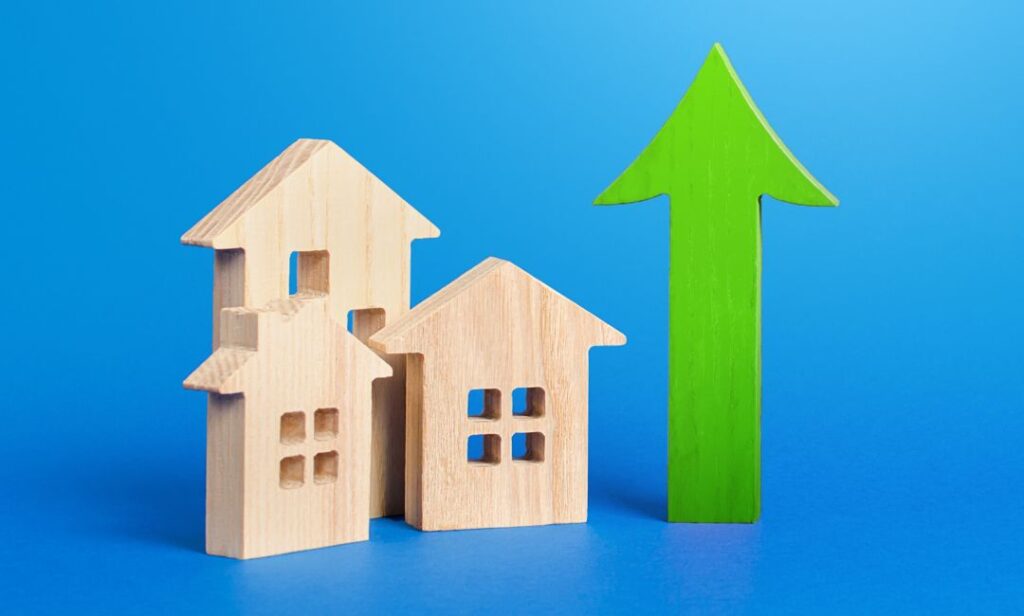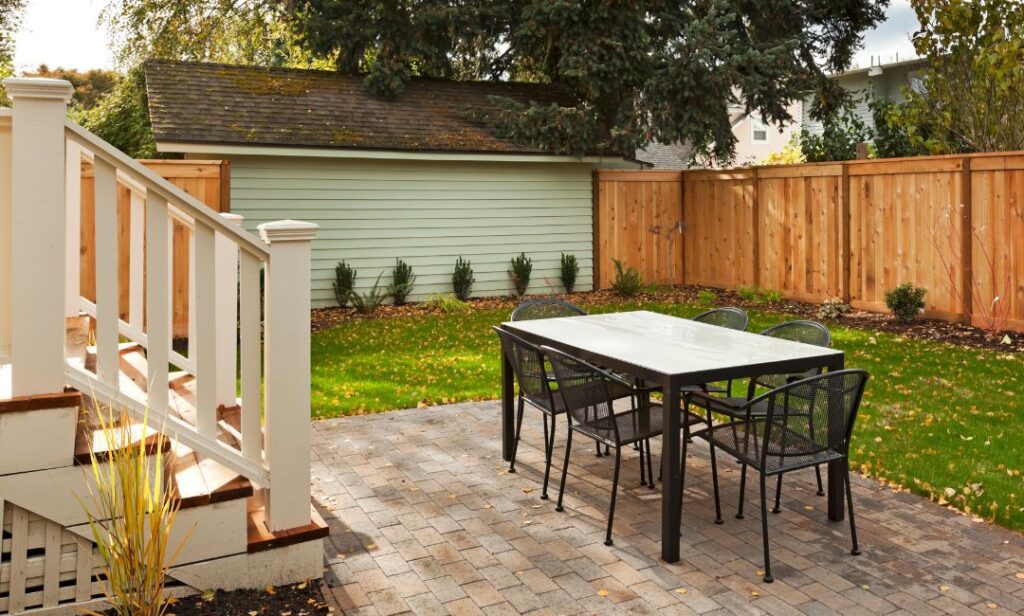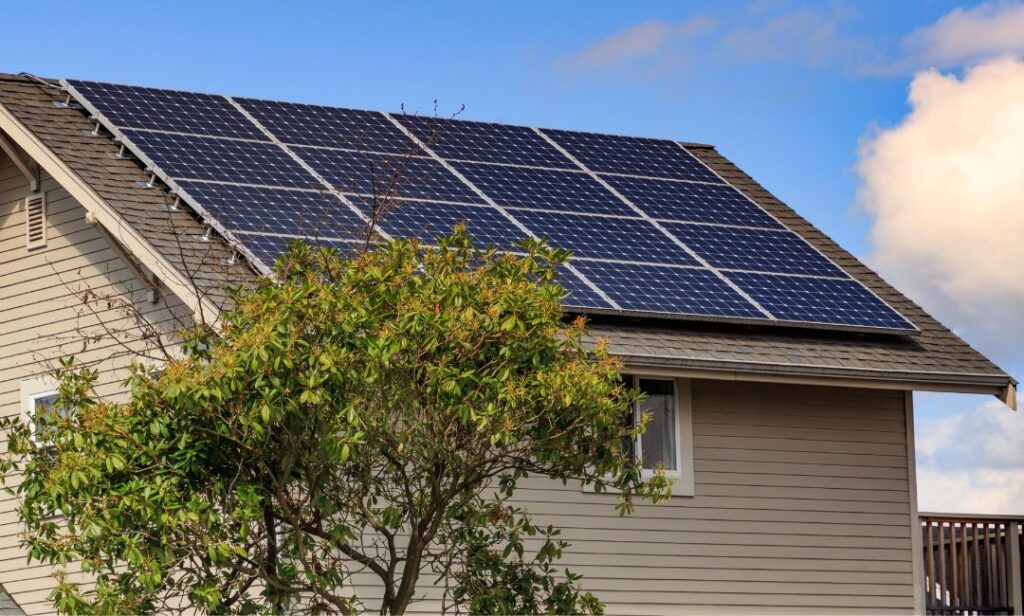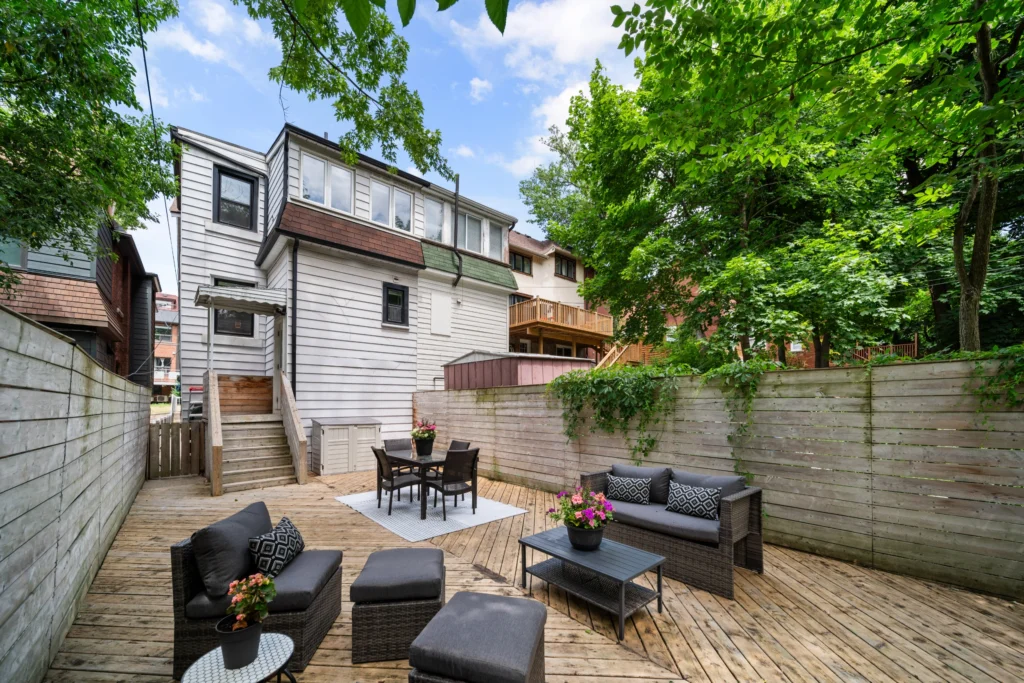Investing in a Future-Proof Home
11/04/24

Imagine a home that adapts effortlessly to your changing life. A place that grows with your dreams, your family, and your needs. That’s what it means to future-proof your home. Whether you’re considering a home in Toronto’s west-end neighbourhoods like High Park, Bloor West Village, The Junction, or Swansea, it’s important to think about how your home can adapt to your evolving needs.
A future-proof home evolves alongside you. Whether it’s expanding for a new family member or becoming more accessible as you age, adaptability is invaluable. By planning ahead, you can avoid major renovations, save money, and enjoy lasting comfort. The goal is to create a home that fits your lifestyle today and tomorrow.
- The Importance of Planning Ahead
- Smart Layout Choices
- Accommodating Growing Families and Multi-Generational Living
- Making Outdoor Spaces Work for You
- Energy Efficiency and Smart Home Features
- Financial Benefits of Future-Proofing
- Building a Home That Lasts
- Frequently Asked Questions (FAQ) About Future-Proofing Your Home
The Importance of Planning Ahead

Buying a home is a significant decision. It’s not just about what you need now, but also about what you’ll need in the future. Choosing adaptable features means your home will grow with you, bringing stability and peace of mind. Planning ahead ensures fewer disruptions, letting you focus on enjoying your home instead of constantly updating it.
Consider designing your home with long-term adaptability in mind. This could mean opting for an open floor plan that is easy to reconfigure, or installing features like extra-wide doorways to make mobility easier as you age. Think about your lifestyle and what changes might come over the years—having the foresight to plan for those changes now will make your home more enjoyable and less costly in the long run.
Smart Layout Choices

Versatile Floor Plans
Open-concept layouts make homes feel larger, more connected, and easier to adapt. In areas such as Bloor West Village and High Park, where space can be a premium, an open-concept layout can maximize your home’s potential while fostering a sense of connection within the household. These spaces can evolve with your needs—whether you’re adding a temporary office or adjusting for family activities, open areas offer flexibility and keep the family together. The benefit of an open-concept home goes beyond aesthetics; it’s about creating a functional, versatile living area that can transition with you through different stages of life.
For example, if you’re a young couple, an open-concept living area might be the perfect place to entertain friends. As your family grows, the same space can be easily adapted for kids to play while adults prepare meals. When your children are older, it might serve as a comfortable area for family gatherings. A well-planned, open layout offers the kind of versatility that makes life simpler and more connected.
Multi-Purpose Rooms
Rooms that can change function are key. A nursery can transform into a home office, and a playroom can become a study area. Adaptable furniture, like Murphy beds or modular shelving, makes this transition easy and maximizes each space’s utility over time. The ability to transform rooms means your home remains practical, no matter the changes life brings.
Think of a multi-purpose room as a blank canvas that adjusts to meet your needs. In early stages, a room can serve as a nursery with built-in storage for all those baby essentials. As children grow, the same space might become a playroom, filled with educational toys and activities. Later, it can be transformed into a study space where children can do homework, or even an office for remote work. Investing in high-quality, adaptable furnishings like foldable desks, convertible sofas, and modular shelving units means each room can flex to meet changing needs without the expense of a complete remodel.
Accommodating Growing Families and Multi-Generational Living

Room to Grow
When planning for a growing family, consider extra bedrooms that can evolve—from children’s rooms to guest rooms or hobby spaces. Bathrooms are just as important; more bathrooms mean less morning stress, and adding features like dual sinks can make life easier for everyone.
A good bedroom configuration today might mean keeping younger children close to the primary bedroom, which makes late-night check-ins easy. In neighbourhoods like The Junction or Swansea, where families value comfort and community, thoughtful bedroom configurations can make all the difference in creating a home that meets your family’s needs now and in the future. As your kids grow, they might want more privacy, and the layout should be adaptable enough to support that, with rooms that can be swapped or spaces that can be repurposed.
In addition, consider built-in storage solutions in bedrooms that can evolve alongside your family’s changing needs. A child’s closet, for example, can be outfitted with adjustable shelving to accommodate growing clothing collections or even to store school supplies, toys, and eventually books and electronics. Built-in closets, modular storage solutions, and even under-bed storage options can ensure that each room remains useful and organized as time passes.
Multi-Generational Living
With more families choosing to live together across generations, consider features like in-law suites or accessory dwelling units (ADUs) such as Garden Suites, Laneway Homes or converted attached garages. These provide privacy while keeping loved ones close, and they can even generate rental income when not in use. Thoughtful shared spaces and private areas help maintain harmony in a busy household.
Multi-generational living is becoming increasingly common as families look to support each other emotionally and financially. Designing a home with dedicated spaces for extended family members can be incredibly rewarding. In-law suites that include a bedroom, small living area, and even a kitchenette allow elderly relatives to maintain a level of independence while staying close to family for care and support. These suites can also serve other purposes, such as guest accommodations or as a home office when not occupied by family members.
If building a separate suite isn’t an option, look into adding privacy through layout choices. For example, a finished basement with its own bathroom and kitchenette can offer a comfortable private space for a family member, while still allowing them easy access to the main living areas of the home. This type of setup ensures everyone has their own area but can come together in shared spaces, promoting balance and connection without compromising personal space.
Making Outdoor Spaces Work for You

Flexible Outdoor Living
Think of your backyard as an extension of your home. In areas like High Park or Swansea, where access to nature and outdoor activities is a part of daily life, making your backyard adaptable ensures it remains an enjoyable part of your lifestyle. A space that starts as a play area for kids can become a relaxing retreat later on. Features like patios, decks, and low-maintenance landscaping can adapt to your family’s changing needs, ensuring the space remains enjoyable throughout every stage of life.
An outdoor space can be so much more than just a patch of grass. Early on, it might be perfect for a swing set or sandbox, providing a safe place for children to play. As your family grows, that space can evolve—perhaps into a garden, an outdoor dining area, or a fire pit for social gatherings. Low-maintenance landscaping is ideal for busy families who want an attractive outdoor space without spending too much time on upkeep. Choose native plants that thrive with minimal care, or create raised garden beds that can be used for vegetables or flowers, providing both beauty and function.
Versatile Outdoor Living Areas
Patios and decks add significant value to your home. They provide areas for outdoor dining, lounging, and socializing. Outdoor living areas can be customized to fit a wide range of activities—whether it’s a cozy dinner for two or a larger gathering with friends and family.
Consider adding covered areas to make these outdoor spaces usable in different weather conditions. A pergola or awning can provide shade during the summer and some protection from light rain, making your patio more versatile. Adding elements like outdoor heaters or a fire pit can extend the use of these spaces into cooler months, making them functional year-round. With thoughtful planning, your outdoor area becomes a natural extension of your home’s interior, offering comfort, relaxation, and entertainment options for every season.
Low-Maintenance Landscaping
Low-maintenance landscaping is ideal for busy families. Opt for native plants that require less water and care. Native plants are typically more resilient to local weather conditions, which means they are less likely to need constant attention, fertilizing, or watering, allowing you to enjoy a beautiful garden without the added stress.
Hardscaping, like stone pathways or patios, also reduces the time and effort needed to maintain your outdoor space. Features like gravel walkways, raised garden beds, or paver patios keep your yard looking great without the constant upkeep. Additionally, consider installing drip irrigation to keep your plants watered efficiently while reducing the need for manual watering. Including some drought-resistant plants can further minimize the maintenance effort. By incorporating these strategies, you can enjoy a beautiful outdoor area that enhances your home without demanding much of your valuable time.
Energy Efficiency and Smart Home Features

Energy-Efficient Upgrades
Energy-efficient systems can reduce bills and increase comfort. Well-insulated windows, efficient HVAC systems, and LED lighting all add value while making your home more sustainable. Smart home technology like thermostats, lighting, and security systems also enhances convenience and safety, boosting your home’s long-term value.
Consider upgrading appliances to energy-efficient models that use less electricity or water. Look for the ENERGY STAR label, which certifies products that meet high standards of efficiency. From washing machines to dishwashers, energy-efficient appliances reduce utility costs and minimize the environmental footprint of your household. Simple upgrades, such as installing programmable thermostats and using LED lighting, can also have a significant impact on reducing energy consumption.
Adding more insulation to walls and attics, or replacing older windows with energy-efficient models, will help regulate indoor temperatures and reduce the need for constant heating or cooling. These changes improve not only the comfort of your living environment but also the cost-efficiency of maintaining it. With these energy-efficient choices, you invest in both the future of your home and the environment.
Renewable Energy
Adding renewable energy options, like solar panels, helps future-proof your home by reducing reliance on external power sources and lowering energy bills. Many areas even offer incentives to offset initial costs, making this a wise long-term investment.
Solar panels are one of the most popular renewable energy options for homeowners looking to reduce their carbon footprint and save on utility bills. Advances in solar technology have made it more affordable and accessible, and government rebates or tax incentives can help reduce the initial cost. In addition to solar panels, homeowners may consider adding small-scale wind turbines or geothermal heating systems, both of which can further reduce energy costs and increase the overall energy independence of the home.
Energy storage systems, like home batteries, can also complement renewable energy sources, ensuring your home has power during outages or periods of reduced sunlight. These solutions make your home more resilient and less dependent on the grid, adding value and peace of mind.
Financial Benefits of Future-Proofing

Budgeting for Improvements
Planning for future upgrades is essential. Setting aside funds annually ensures you’re ready for both planned renovations and unexpected repairs. This forward-thinking approach keeps your home comfortable and adaptable without financial strain.
Consider the “1% rule”—saving at least 1% of your home’s value each year for maintenance and upgrades. By budgeting for these costs ahead of time, you’re prepared for wear and tear and can make improvements that enhance comfort and value. It can also be helpful to categorize upgrades into short-term, medium-term, and long-term goals to help prioritize spending. For instance, replacing a roof or updating a kitchen could be a long-term project, while adding a smart thermostat might be a more immediate upgrade.
Generating Income
Features like ADUs can generate rental income, which helps offset mortgage costs and makes your home more attractive to future buyers. This extra income can also fund future improvements, ensuring your home remains a valuable investment.
Rental units can be highly attractive for homeowners seeking to supplement their income. This is particularly true in Toronto’s west end neighbourhoods, such as The Junction and Bloor West Village, where the demand for rental units is high, and the additional income can help offset mortgage costs. Whether through a long-term tenant or short-term rental platforms, having an additional rental unit provides financial flexibility. Rental income can then be reinvested into the property, funding other upgrades that continue to increase your home’s value.
In areas where rental demand is high, having a well-designed ADU or in-law suite can significantly enhance your property’s marketability. Many buyers view an income-generating space as a major bonus, potentially helping your home sell faster and at a higher price. This feature is particularly attractive in urban areas or places with a high cost of living, where rental spaces are in demand.
Building a Home That Lasts

Planning for the Future Today
By planning today, you can create a home that evolves with your life. From adaptable layouts to energy-efficient systems, every decision you make now will contribute to a comfortable, future-ready space that meets your needs for years to come. Embrace the idea of a home that grows with you—it’s an investment in long-term comfort, stability, and happiness.
Think of every choice you make today as an investment in your future comfort. For instance, a versatile floor plan that can be reconfigured will pay off when your needs change, whether that’s accommodating a growing family or creating space for a home office. Prioritizing energy efficiency now means you’ll save on utility bills and enjoy a more comfortable living environment for years to come.
Embrace Adaptability
Embrace the idea of adaptability. A home that changes with your life is not just practical but also provides long-term satisfaction.
Think beyond your current needs and consider how your home can accommodate different stages of life. With the right approach, your home can truly be the foundation for your family’s future well-being. It’s about more than just functionality—it’s about creating a sanctuary where every member of your household feels comfortable and secure. Adaptable homes are easier to maintain, more enjoyable to live in, and, ultimately, offer better value over time.
A future-proof home is one that remains valuable both as an investment and as the core of your family’s day-to-day life. Thoughtful planning today, whether through design choices, budgeting for upgrades, or incorporating energy-efficient technology, will ensure that your home is ready to face whatever the future holds—comfortably and beautifully.
Frequently Asked Questions (FAQ) About Future-Proofing Your Home
1. What does it mean to future-proof a home?
Future-proofing a home means designing it in a way that allows it to adapt to changing needs over time. This includes features like flexible layouts, multi-purpose rooms, energy-efficient systems, and other considerations that make the home easier to modify as your lifestyle evolves. The goal is to ensure your home remains functional, comfortable, and valuable, no matter what the future holds.
2. How can I make my home more adaptable?
To make your home more adaptable, consider implementing an open-concept floor plan, multi-purpose rooms, and built-in storage solutions. Additionally, think about future renovations by including features like wider doorways and structural flexibility. Adding renewable energy options and smart home technology can also make your home adaptable to future technological advancements.
3. What are the financial benefits of future-proofing my home?
Future-proofing your home can save money in the long term by reducing the need for major renovations as your needs change. Energy-efficient upgrades lower utility bills, and features like ADUs can generate rental income. Thoughtful investments in adaptability and sustainability also increase your home’s resale value.
4. How does energy efficiency play a role in future-proofing?
Energy efficiency is key to future-proofing because it helps reduce ongoing costs and increases comfort. Energy-efficient windows, insulation, appliances, and HVAC systems all contribute to lower utility bills. Renewable energy options like solar panels provide long-term savings while also making your home more environmentally friendly.
5. What features should I include for multi-generational living?
For multi-generational living, consider adding features like in-law suites, accessory dwelling units (ADUs), or separate living spaces with their own entrances, bathrooms, and kitchens. Privacy is important for maintaining harmony, so designing separate areas while also providing shared spaces for family interaction is key.
6. How do I plan for future renovations when buying a home?
When buying a home, think about how easy it will be to make future changes. Look for properties with unfinished basements or attics, logical layouts that can be easily reconfigured, and open spaces that allow for flexibility. Additionally, consult an architect or designer early on to ensure that any planned renovations will be feasible.
7. Can adding smart home technology increase my home’s resale value?
Yes, smart home technology can significantly boost your home’s resale value. Features like smart thermostats, security systems, automated lighting, and smart locks are increasingly attractive to buyers looking for convenience and modern amenities. These features enhance comfort, security, and energy efficiency, all of which contribute to higher property value.
8. Why is low-maintenance landscaping important for a future-proof home?
Low-maintenance landscaping is important because it saves time, reduces ongoing costs, and ensures your outdoor spaces remain functional and attractive. Using native plants, hardscaping, and efficient irrigation systems helps maintain a beautiful yard with minimal effort, which is especially valuable as your priorities change over time.
9. How does an ADU add value to my property?
An ADU (Accessory Dwelling Unit) adds value by providing a versatile space that can be used for rental income, multi-generational living, or as a guest suite. It increases the functional living space of your property, making it more attractive to potential buyers who see the value in an additional, flexible area.
10. What is the ‘1% rule’ for budgeting home improvements?
The ‘1% rule’ suggests saving at least 1% of your home’s value each year for maintenance and upgrades. This budgeting strategy ensures that you’re financially prepared for both routine maintenance and any necessary improvements, helping keep your home comfortable, functional, and future-proof.
Need some help?
The Smith Proulx Team knows what it's like to find a home that grows with your family. We ARE a family, after all! Let's get started!



